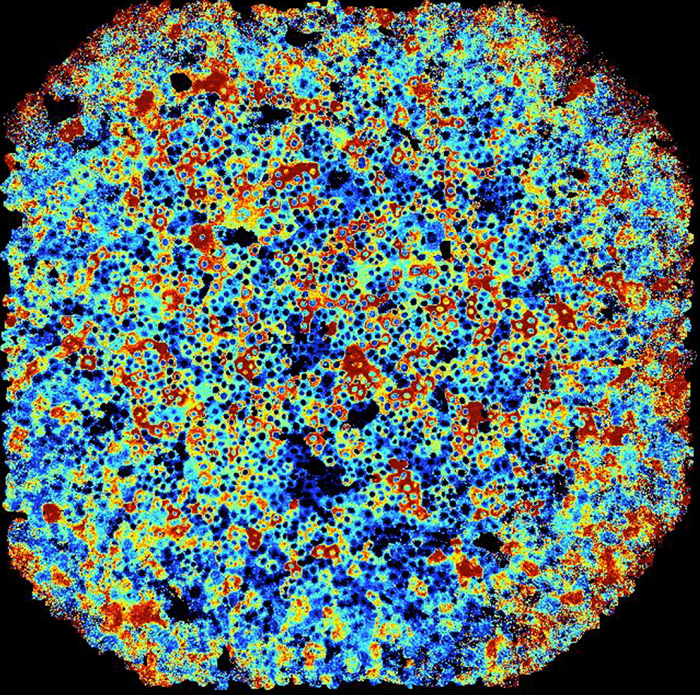
Cells Can Use Dynamic Patterns to Pluck Signals From Noise
Published Date
By:
- Susan Brown
Share This:
Article Content

A special microscopy system continuously measures responses in thousands of cells at a time. Photo courtesy of Wollman Lab.
Scientists have discovered a general principle for how cells could accurately transmit chemical signals despite high levels of noise in the system, they report in Science this week.
A cell's response to outside chemical signals depends on its physiological state, which can fluctuate considerably. Amounts of different kinds of proteins within individual cells varies by as much as 25 percent.
"Compared with engineered components such as a transistor, that's a lot of noise," said Roy Wollman, a professor of chemistry and biochemistry at the University of California, San Diego. "This requires a different kind of problem solving."
Wollman and colleagues combined advanced microscopic imaging with information theory to determine how cells might encode information about the level of incoming chemical signals, given their variable states.
They studied three different chemical communication systems - molecules outside the cells that effect three different kinds of changes within, each on a different time scale. One signal releases calcium from internal stores to diffuse freely through the cytoplasm within minutes. Another changes the shape of a responding molecule over about an hour. A third moves a protein from the cytoplasm to the cell nucleus where it interacts with DNA over about 10 hours.
Wollman's team recorded responses to the three signals with a microscopy system that continuously measures changes in thousands of cells at a time. They monitored more than nine-hundred thousand cells responding to varying levels of each of the three chemical signals.
No single measure captured the cells' responses in a way that accurately preserved information about the concentration of the chemical signal outside the cell. Instead, a measure that captured the change of the cell's responses over time accurately recorded the level of the incoming signal. And information theoretical analysis concluded that the 'noise' of varying cellular states could be eliminated in this way.
“It shows how to build a communication system that can function in the presence of so much noise,” Wollman said.
The project is an example of quantitative biology, an approach to the study of life that aims to reveal fundamental principles that can predict how biological systems will work. Learn more about UC San Diego's quantitative biology program here: qbio.ucsd.edu.
Co-authors include Jangir Selimkhanov and Brooks Taylor, graduate students in bioengineering at UC San Diego who contributed equally to the work, Jason Yao and Anna Pilko in UC San Diego's department of chemistry and biochemistry, John Albeck of UC Davis, Alexander Hoffmann of UCLA, and Lev Tsimring of UC San Diego's Biocircuits Institute. Hoffmann, Tsimring and Wollman are also part of the San Diego Center for Systems Biology, which is supported by the National Institute of General Medical Sciences.
Share This:
You May Also Like
Stay in the Know
Keep up with all the latest from UC San Diego. Subscribe to the newsletter today.


